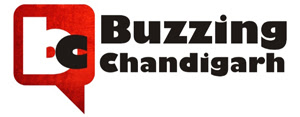Chandigarh:The Project Evaluation & Review Technique (PERT), developed by the US Navy in 1958, breaks down complex projects into manageable tasks, enhancing efficiency for project managers and employees. PERT is particularly useful for intricate projects with interdependent activities, aiding in effective scheduling and coordination while addressing unpredictable timelines. Similarly, the Critical Path Method (CPM), created in the late 1950s by Morgan R. Walker and James E. Kelley Jr., focuses on identifying the sequence of tasks that determines the shortest project duration. By highlighting the "critical path," CPM helps project managers monitor essential activities whose delays could significantly impact overall timelines, promoting efficient planning, coordination and execution.
How these two techniques help in tackle low sales in the Insurance sector
The insurance sector, known for its complex processes and high-stakes operations, can significantly benefit from the application of the Program Evaluation and Review Technique (PERT) and the Critical Path Method (CPM). These effective project management methods provide structure, improve efficiency, and create predictability for complex projects. By breaking down large-scale projects such as launching a new insurance product, executing a major marketing campaign, or implementing digital transformation into smaller, manageable tasks, PERT and CPM allow insurers to create detailed plans with precise timelines and task dependencies. This ensures that every activity is completed in the correct sequence and on schedule. One of the critical advantages of these tools is their ability to identify the critical path, the sequence of tasks that directly affects the project’s completion date. This capability enables companies to concentrate on high-impact activities, such as securing regulatory approvals and finalizing marketing materials, to minimize delays and enhance efficiency. The Program Evaluation Review Technique and Critical Path Method provide insights that optimize resource allocation, including personnel, budget, and technology for each task. This helps insurers avoid bottlenecks and ensures that the right resources are available at the right point in time, which is particularly crucial for resource-intensive projects like claims processing or customer service improvements. Risk management, a cornerstone of the insurance industry, is also significantly enhanced through these methodologies. PERT's probabilistic time estimates—optimistic, most likely, and pessimistic—enable companies to anticipate potential delays and uncertainties in the project timelines. Meanwhile, CPM highlights vulnerabilities in facilitating proactive contingency planning and risk mitigation. In addition to planning and execution, PERT and CPM improve communication and collaboration. This ensures that all teams—from sales and marketing to IT and compliance are aligned and working cohesively towards shared objectives. These techniques also enable continuous monitoring and controlling, allowing insurers to track progress against planned timelines, which helps in identifying deviations and making necessary adjustments to keep projects on track. This ensures that sales targets are met, product launches are successful, and operational improvements are realised as intended. Practical applications of PERT and CPM in the insurance sector are vast. They range from streamlining product launches and optimising marketing campaigns to improving claims processing and managing operational upgrades, all of which contribute to better customer satisfaction, increased sales, and enhanced operational performance. For example, when launching a new health insurance product, these methodologies ensure that tasks such as market research, product design, regulatory approval, and marketing are systematically planned and executed. Risks like regulatory delays or resource shortages are proactively addressed, ultimately leading to a successful and timely market entry. In summary, by integrating PERT and CPM into insurance sector project management practices, insurance companies can navigate the complexities of their industry with greater precision, efficiency, and confidence. This approach drives better outcomes and helps maintain a competitive edge in a rapidly evolving market.
PERT and CPM are very useful techniques to be implemented in the insurance sector because it can lead to increase of customer engagement and also lead to eliminate repetition of task. Lakshya Mehta- Vertical Admin at Bajaj Allianz General Insurance

















No comments:
Post a Comment